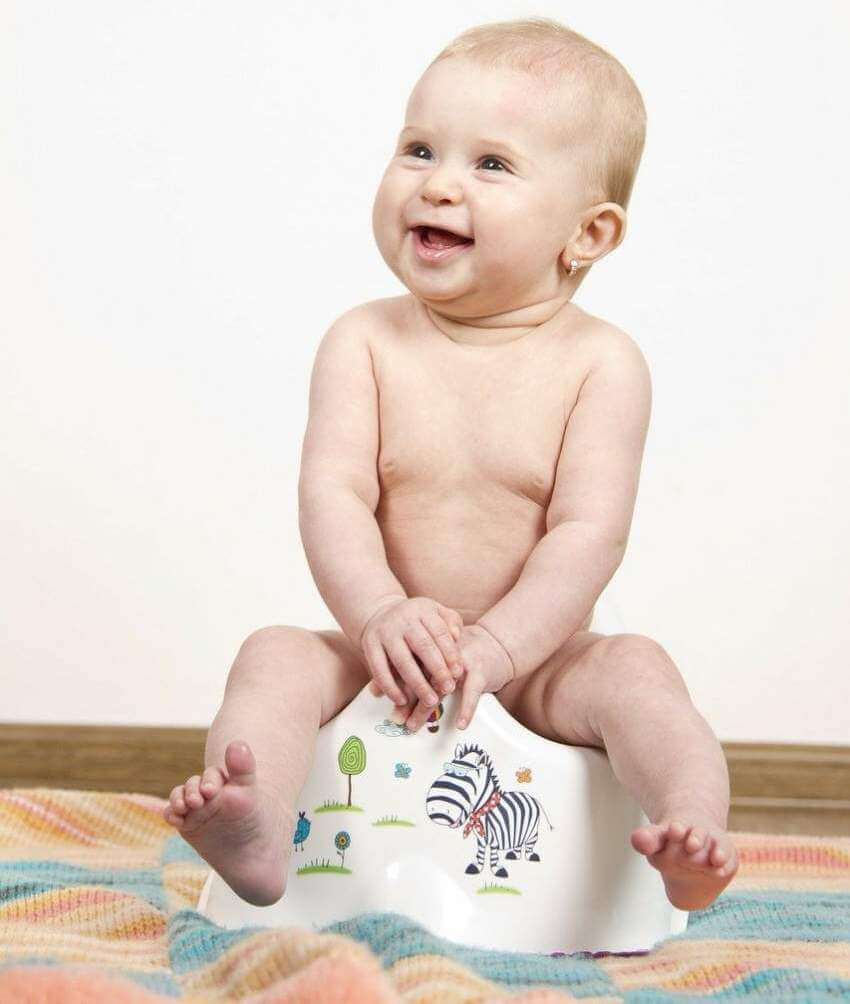As your baby grows, they amaze you by learning new things every day. Just like your little one learns to sit up, crawl, or walk – potty training is a skill they need to hone over time. Babies may exhibit signs of readiness for potty training anytime between 18 months to 3 years. But age is not the only factor that determines the time to start baby potty training. It can only begin after a certain level of emotional and physical development has taken place.
So how can you find out when to start potty training? The answer lies in some tell-tale signs in your child’s behaviour and routine actions. Even though every child is different, there are some common tell-tale signs you can look for.
Watch out for these nine signs of potty-training readiness in your baby –

- You are Changing Fewer Wet Diapers – Up until 20 months, babies pee pretty frequently and have very little bladder control. But as they begin to develop a matured myelin in their nervous system, they begin to feel and control the urge to pee. If your toddler stays dry for two or more hours at a stretch and usually awakens without wetness – they are physically ready for potty training.
- Predictable Bowel Movements – You may notice that your baby poops at the same time each day. It could be right after meals, just before bedtime or early every morning. Use this routine to your advantage by sitting them down on a potty seat at that time every day to start potty training.
- Communicate Body Functions – Your baby may begin announcing body functions like bowel movements by saying something or gesturing. Some children start to say words like ‘potty!’ or ‘I am pooping now!’ while others make other gestures like fisting their hands, making grunting noises or slinking into a corner where no one can see them do their business. Broadcasting bodily functions show that your child is aware of their need to use a toilet and is ready for potty training.
- Can Perform Simple Undressing Tasks – Babies must learn to pull down their pants or underwear before they begin potty training. Children who can perform basic undressing will be more comfortable during potty training.
- Understands Bathroom Lingo – A child should understand the meanings of words like ‘potty’ or ‘pee-pee’ or any other word related to using the toilet, used by others at home. Only when your baby understands these terms can they express the need to use the bathroom.
- Being Aware of a Dirty Diaper & Pulling it / Trying to Take it Off – Some babies begin to express their displeasure at a dirty diaper when they are ready for potty training. It is a sign to start potty training if you notice your baby pulling at the dirty diaper, trying to pull it off, or asking for a diaper change after they poop.
- Interest in Potty Training / Wants to Sit on the Potty – You are more likely to see this trait in babies who spend time around other children their age, perhaps at day-care or with a slightly older sibling and potty trained. When your baby starts to understand that everyone around them uses the potty regularly, they may get interested in using it themselves. That’s a great place to start baby potty training.
- Wants to Wear Underwear – Kids who are ready to start potty training start asking to wear underwear instead of a diaper. Wearing underwear is infinitely more comfortable than wearing a diaper, and that motivates your baby to start potty training. Try potty training pants that are comfortable and easy for your child to wear or take off during potty training.
- Able to Follow Directions – Children capable of following basic instructions, for example, “Keep your toy on the table and sit down…” are likely to succeed at potty training. Your child needs to understand your instructions to go to the bathroom, undress, sit on the potty, and clean them when done.
Perhaps the most important thing to remember as a parent or a caregiver is to remain patient with your child as they go through baby potty training. It takes some time for a child to transition from diapers to using the toilet, and they can only do it with your support. Cleaning up pee-pee or potty accidents can be frustrating, but the key is to be positive and helpful.
Author Bio:
Neha Divan, a toddler-mom, works as part of the content team at SuperBottoms, a baby product brand that develops innovative and sustainable products, like the No.1 best-selling reusable cloth diaper in India. She is passionate about empowering parents with her content to help make parenting a little easier and a lot more fun. She often writes from the first-hand experience and has a knack for presenting her ideas clearly which lets her readers connect with her content. Art & craft are her things and she also loves coming up with fun and healthy recipes for kids.
Reference:
- https://www.pull-ups.com/en-us/potty-training/when-to-start/6-signs-your-child-is-ready
- https://www.pampers.com/en-us/toddler/potty-training/article/when-to-start-potty-training-signs-your-child-is-ready
- https://www.whattoexpect.com/toddler/potty-training/signs-of-readiness.aspx
- https://www.parents.com/toddlers-preschoolers/potty-training/basics/10-signs-your-child-is-ready-to-start-potty-training/
